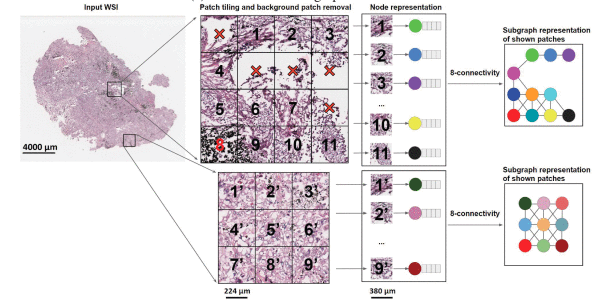For installation instructions, refer to Installation Guide
Our project involved tackling the UBC OCEAN competition, where we were provided with 70% of the data to build a model. Later, our code was evaluated on a hidden test set comprising 30% of the available data.
- Create Graph from image
- Creating graph based models on this data.
For more detailed description checkout Project Summary
-
Lu, M., Williamson, D., Chen, T., Chen, R., Barbieri, M., & Mahmood, F. (2021). Data-efficient and weakly supervised computational pathology on whole-slide images. Nature Biomedical Engineering, 5, 1-16. DOI
-
Wang, X., Yang, S., Zhang, J., Wang, M., Zhang, J., Yang, W., Huang, J., & Han, X. (2022). Transformer-based unsupervised contrastive learning for histopathological image classification. Medical Image Analysis, 81, 102559. DOI
-
Zheng, Y., Gindra, R., Green, E., Burks, E., Betke, M., Beane, J., & Kolachalama, V. (2022). A Graph-Transformer for Whole Slide Image Classification. IEEE Transactions on Medical Imaging, PP. DOI
-
Bradski, G. (2000). The OpenCV Library. Dr. Dobb's Journal of Software Tools. Link
-
Otsu, N. (1979). A Threshold Selection Method from Gray-Level Histograms. IEEE Trans. Syst. Man Cybern. Link
-
He, K., Zhang, X., Ren, S., & Sun, J. (2015). Deep Residual Learning for Image Recognition. arXiv
-
Ilse, M., Tomczak, J. M., & Welling, M. (2018). Attention-based Deep Multiple Instance Learning. arXiv
